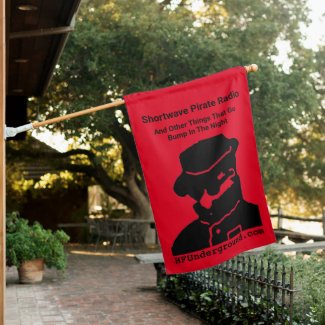1981
Equipment / Re: Alinco DX-R8T
« on: January 19, 2012, 2047 UTC »
I talked myself into wanting the DX-R8T. So my wife and I drove 160 miles one way to the closest store with one in stock so I could bring it home. When I got there I took a few minutes to set down and play with the rig. They had it on a desk right next to the Icom R-75.
Now, I already had an R-75, I was looking for another radio and thought the SDR feature of the Alinco might be a positive for the shack.
After about 30 minutes of playing with the Alinco I ended up buying another Icom R-75 instead.
The Alinco was not a bad radio. The tuning knob felt surprisingly heavy and weighty, and the tuning was smooth and well controlled. However, the other knobs on the front of the radio felt cheap and flimsy. The radio, on the same antenna and side-by-side with the R-75, did receive pretty much everything the Icom did, but sometimes the Icom seemed to do it "better", and that was probably because of the audio. The audio from the Alinco speaker was even worse than the poor audio from the Icoms built in speaker...and that is a known weak point of the Icom. I never did find a contrast/brightness setting for the LCD on the Alinco that I liked, it just looked “cheap” and not as nice as the Icom.
The sound card SDR feature of the radio (and thus the filter advantage of the SDR application) can only be used when you are NOT listening to audio from the radios own detector, selecting SDR output disables the audio from the radio. The SDR feature is also VERY narrow banded, essentially it is meant for use with digital modes like DRM that require 12 kHz or slightly more of bandwidth, and so I think the SDR is limited to about 24 kHz or so (that is off the top of my head, and might need to be checked).
My opinion here; if the $100+ difference between the two is the difference between getting a radio and not getting one go for the Alinco. If you can afford the Icom get it instead. I know that after using them side by side in an admittedly unscientific 30 minutes of tuning I opted for the Icom myself.
T!
Now, I already had an R-75, I was looking for another radio and thought the SDR feature of the Alinco might be a positive for the shack.
After about 30 minutes of playing with the Alinco I ended up buying another Icom R-75 instead.
The Alinco was not a bad radio. The tuning knob felt surprisingly heavy and weighty, and the tuning was smooth and well controlled. However, the other knobs on the front of the radio felt cheap and flimsy. The radio, on the same antenna and side-by-side with the R-75, did receive pretty much everything the Icom did, but sometimes the Icom seemed to do it "better", and that was probably because of the audio. The audio from the Alinco speaker was even worse than the poor audio from the Icoms built in speaker...and that is a known weak point of the Icom. I never did find a contrast/brightness setting for the LCD on the Alinco that I liked, it just looked “cheap” and not as nice as the Icom.
The sound card SDR feature of the radio (and thus the filter advantage of the SDR application) can only be used when you are NOT listening to audio from the radios own detector, selecting SDR output disables the audio from the radio. The SDR feature is also VERY narrow banded, essentially it is meant for use with digital modes like DRM that require 12 kHz or slightly more of bandwidth, and so I think the SDR is limited to about 24 kHz or so (that is off the top of my head, and might need to be checked).
My opinion here; if the $100+ difference between the two is the difference between getting a radio and not getting one go for the Alinco. If you can afford the Icom get it instead. I know that after using them side by side in an admittedly unscientific 30 minutes of tuning I opted for the Icom myself.
T!


